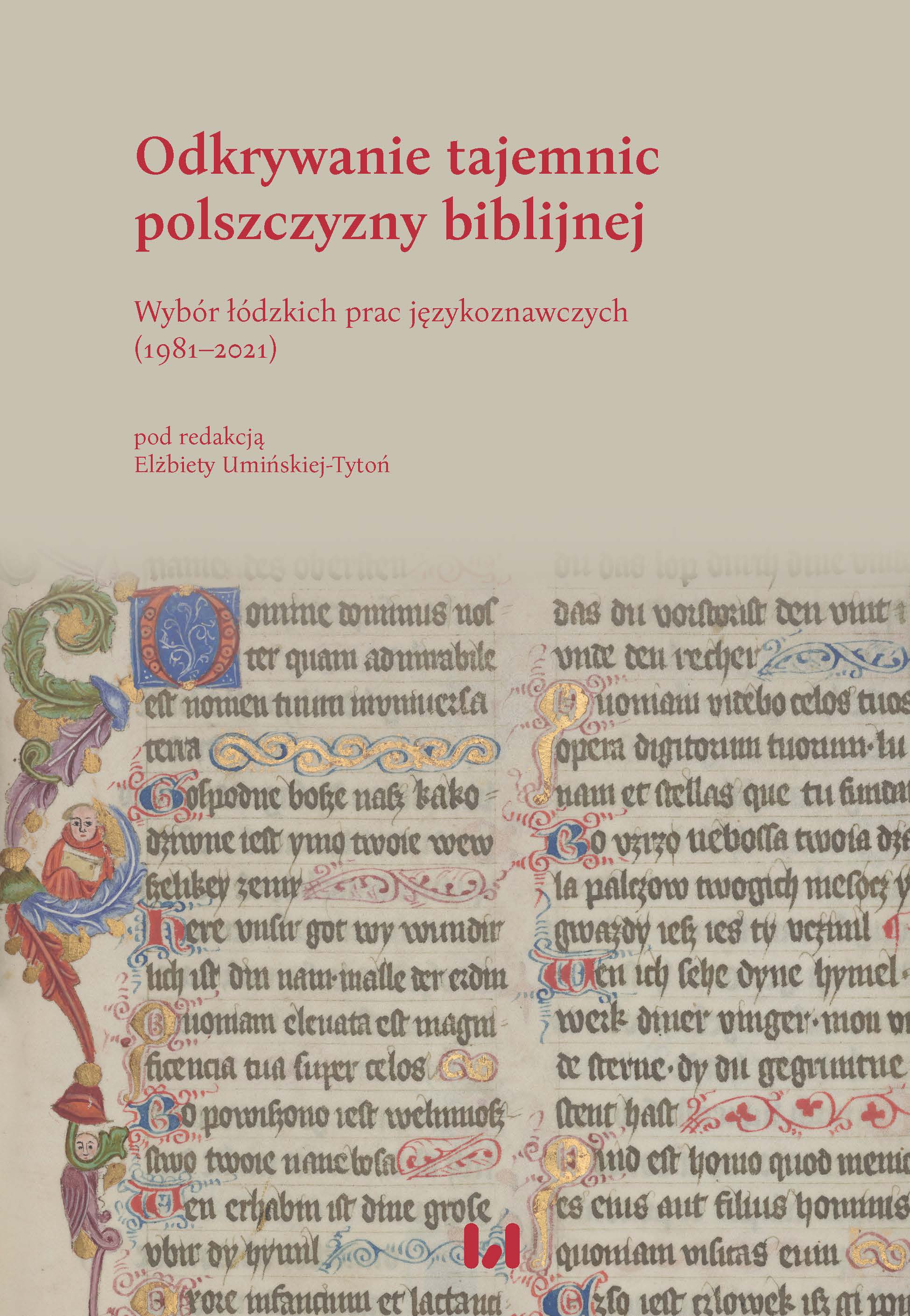Kanoniczny i apokryficzny obraz Piłata (na materiale staropolskich narracji biblijno-apokryficznych)
The canonical and apocryphal image of Pilate (on the material of Old Polish biblical-apocryphal narratives)
Author(s): Ewa Woźniak
Subject(s): Christian Theology and Religion, Language and Literature Studies, Theology and Religion
Published by: Wydawnictwo Uniwersytetu Łódzkiego
Keywords: Old Polish biblical-apocryphal narratives; Pilate; Bible - translations of the 16th century
Summary/Abstract: The aim of the article is to confront the canonical and apocryphal image of Pilate present in Old Polish monuments. The material basis is constituted by biblical-apocryphal narratives from the period up to about the mid-16th century (Sprawa chędoga o męce Pana Chrystusowej, Rozmyślania dominikańskie, Rozmyślanie przemyskie, Żywot Pana Jezu Krysta, Ewangelia Nikodema) and the closest translations of the Bible (Leopolita’s from 1561 and J. J. Wujek’s from 1599). In the reconstruction of the image of the figure, the concept of the semantic role of the predicate argument was used, comparing the figure of Pilate as an experiencer, performer of the will and subject of knowledge and subject of mental activities in the studied sources. The list shows that the canonical approach to Pilate as a speaking person is dominant, while the authors of apocryphal narratives talk more and more about the intentions of the Roman governor, explain what Pilate wants to achieve by taking specific actions, and what values guide him. The conducted analysis leads to the conclusion that the extensive emotional and volitional characteristics of Pilate in the biblical-apocryphal narratives serve an acquitting interpretation of his deeds, the sources of which, however, lie clearly in the canonical message.
Book: Odkrywanie tajemnic polszczyzny biblijnej. Wybór łódzkich prac językoznawczych (1981–2021)
- Page Range: 233-247
- Page Count: 15
- Publication Year: 2022
- Language: Polish
- Content File-PDF

